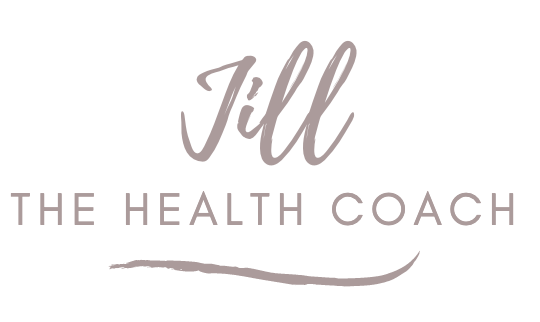We all know the benefits of exercise. Of course it’s good for you. So, why don’t we all do it? No time, no desire, it’s boring. Personally, I don’t really love exercising. However, I do it almost every day. As with everything I do in my life, I prefer the quickest but most effective way to get results. We’re all busy and don’t necessarily have hours to exercise. After a bit of research and lots of personal experimentation, I found a way to get the most bang for my buck. The best part is that it really works (for ANYONE -from 8 to 80) and the short time flies by so quickly that you’re done before you know it!
This is a variation of interval training and Peak Fitness and the PACE method. The common thread is to implement short bursts of exertion followed by rest and recovery. Wait a minute…isn’t is just easier to do a steady stream of cardio for a certain amount of time? When you do that, you burn fat. Sounds good, right? Well, by burning fat, you’re telling your body it needed fat to burn to get through the cardio. In essence, it trains your body to make more fat in preparation for the next time you exercise. It then becomes efficient at preserving fat for the next endurance workout. So, you will start losing excess fat at first and then it will become more difficult as the body becomes more efficient at making more fat. That is why so many people gain weight quickly when they stop doing a moderate cardio workout after a while.
Conversely, for long endurance cardio such as long distance runners, their fat is so well preserved that their bodies search for other things to burn such as muscle and organs. That’s why long distance runners are so thin. Their organs such as the heart and lungs become smaller as well, and have greater efficiency. However, to get greater efficiency, it gives up greater reserve capacity. This means that stressful events trigger its operation to be dangerously close to their maximal output. In the heart, that means more prone to heart distress. It also explains why long distance marathoners such as Jim Fixx have died of heart attacks. It made their hearts adept at handling hours long jogs, but accomplished it by giving up its ability to rapidly provide them with big bursts when circumstances might demand, such as a marathon.
However, with bursts of exercise “you turbo charge your metabolism as your body needs to burn extra calories to repair muscles, replenish energy and bring your body back to its normal state. This process takes anywhere from a few hours up to a whole day-meaning you’ll burn calories long after your workout is over,” according to Dr. Al Sears in his book, P.A.C.E. It’s like revving up an engine so it will stay working. Yes, the real attraction is that you train your body to continually burn calories long after you’ve stopped working out!
Short bursts of intensity training is also a main trigger for the “Fountain of Youth Hormone,” your human growth hormone (HGH). Human Growth Hormone is a vital hormone produced by the pituitary gland. This hormone aids in the turnover of muscle, bone and collagen and helps regulate fat metabolism and more. As we age, our bodies secrete less HGH which contribute to signs of aging such as wrinkles, excessive weight gain, diminished energy, muscle loss, declining mental awareness, weakened immune system and more. So, if you want to lower your body fat, dramatically improve your muscle tone, firm your skin to reduce wrinkles, boost your energy, improve your athletic speed and performance, you should consider making high intensity workouts part of your exercise routine.
Ok, there are lots of reasons to use high intensity workouts…How do you get started? You will need either a watch with a seconds hand or a timer. I downloaded a timer app called Interval Timer that works well. Then you really don’t have to think at all.
There is no need for fancy exercise equipment but you can use equipment if you would like. It’s totally up to you. If you never work out, I would start with a lower amount of total time such as 12 minutes. An optimal high intensity workout is about 20 minutes. I personally time my total workout for 20 minutes max. The goal is to work out intensely for short bursts of 20-40 seconds (always start at 20 seconds and gradually increase to 40 seconds after a few weeks or months) and then rest and recover with a slow and easy form of cardio to catch your breath before the next burst of exertion. The trick is that you should exhaust yourself during the short bursts and feel winded and have oxygen debt during these bursts. By the third burst, you should be sweating and feel your body working hard.
Very simply, I start the first 2 minutes with a slow warm-up (jog in place for example). After 2 minutes, I perform whatever exercise I choose as intensely as possible until I can barely go on anymore. After 40 seconds, I slow it down to a rest and recovery exercise to catch my breath until the next “even minute” comes up (for the second set, this would be at the 4-minute marker) and so on until I complete a total of 9 sets, or 20 minutes’ worth. For ease, I usually just look at a clock when I start, calculate what time it should be 18 minutes later, and stop at that point.
By now you’re wondering what type of exercise to perform. That is up to your comfort level. If you are heavier and rarely work out, you may want to start by walking rigorously during the bursts and then slow the walk during recovery. This will still work as long as you are breathing and working hard during that burst period. You can also do running sprints and recover with a slow jog. You can use any machine such as a bike, elliptical or treadmill-as long as you perform the intense burst and then recover. Another option is with weights. You can lift weights for your burst period to exhaustion and then recover by swinging your arms or stretching.
My favorite is to do different types of bursts of intensity in one workout. Different bursts may consist of jumping jacks, deep lunges, squat thrusts, intense jogging in place, tuck jumps, windmill toe touches, push ups, sit ups, etc. The list is endless. As long as you are breathing hard and working during those bursts and then slow down to recover, you will achieve results. So, on the even minutes, do your burst for 20 to 40 seconds and then slow and recover until the next even minute.
Don’t do the same form of exercise every time you work out. Your body will get used to it and will lose its effectiveness over time. For example, I mix it up by doing the treadmill one day, doing the alternating floor exercises on another day, then weights on another day, etc. My favorite is doing the different type of floor exercises described above as I always mix them up anyway. The next important key is to ramp it up if you find you’re doing one type of exercise but are not breathing as hard during the bursts. It is critical to be winded during these bursts for you to get the most benefit.
One of the best parts is that you only need to train 3 or 4 times a week to get the desired benefit. Everyone has time to squeeze in a 12-minute to 20-minute routine 3 to 4 times a week. So, toss aside those boring hour-long workouts and see for yourself how easy it is and how much better you will feel!
Whenever starting a new exercise regimen, always consult your doctor.


Jill
I love this I using the app on January 6th and I have worked out 7 days straight. I never realized you could get so much done in 20 min (which is all the time I have) I absolutely LOVE it!
Thanks again
Ann